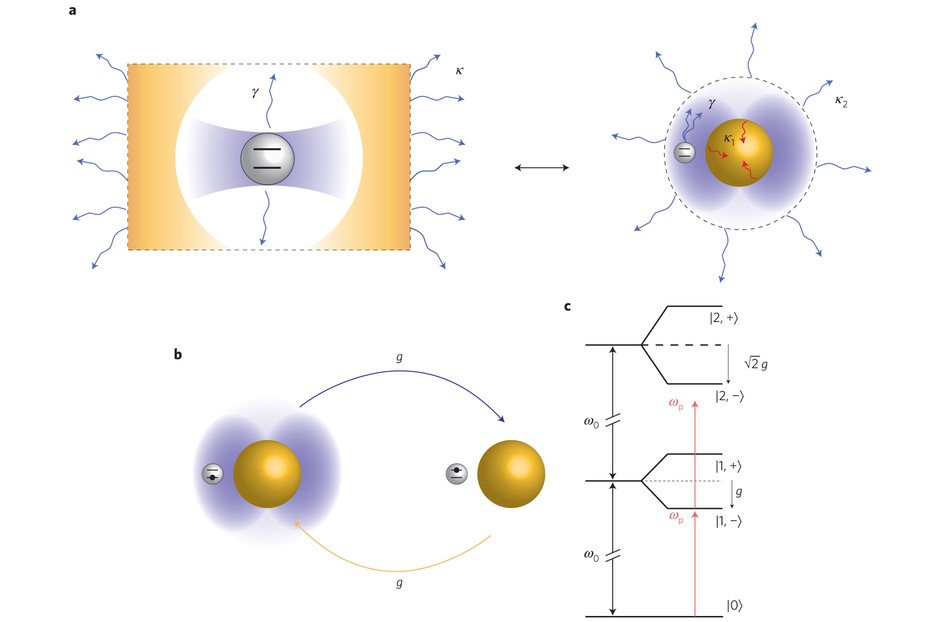
Title: A Long-Awaited Molecule Achieved: Clar’s Goblet Synthesized in Solution After 50 Years
After more than five decades of speculation, scientists have successfully synthesized a molecule previously deemed too unstable to be isolated: Clar’s goblet. This achievement not only resolves a longstanding chemical dilemma but also opens up new avenues in quantum chemistry and computing by examining the spin entanglement of non-bonded electrons.
A Bowtie-Shaped Wonder
Initially suggested by German chemist Enric Clar in 1972, Clar’s goblet is a distinctive bowtie-shaped polycyclic aromatic hydrocarbon. Formed from fused benzene rings in a symmetrical arrangement, Clar’s goblet is remarkable for its inherent diradical nature—indicating it has two unpaired electrons localized at opposite ends of the molecule.
“This diradical configuration is what renders Clar’s goblet so distinctive and scientifically noteworthy,” states Jishan Wu, the principal investigator at the National University of Singapore. “Unpaired electrons are typically reactive, making such molecules notoriously unstable in a solution.”
A Surface-Based Precursor
While the surface synthesis of Clar’s goblet had been previously accomplished by researchers like Fasel and Feng under ultra-high vacuum conditions, these techniques enabled only the creation of isolated molecules in controlled surface settings—narrowing their applicability in wider chemical and technological fields.
Now, Wu and his team have tackled the molecule’s instability by formulating a synthetic pathway that functions in solution—representing a significant advancement in chemical methods and molecular design.
Serendipity Meets Strategy
As Wu explains, the breakthrough occurred when the team noted that a dioxyl-substituted diradical precursor underwent an unforeseen intermolecular radical coupling. This crucial step permitted them to build the extended π-conjugated backbone essential to Clar’s goblet.
“We constructed the majority of the molecule incrementally,” Wu elaborates. “Next, we added bulky stabilizing groups that aided in preventing decomposition, enabling us to isolate substantial amounts of the compound.”
The synthesis produced milligram-scale quantities of Clar’s goblet—unprecedented for such a reactive nanographene structure—and allowed researchers to conduct thorough characterization analyses.
Revealing Quantum Entanglement at the Molecular Scale
Clar’s goblet is particularly fascinating due to its magnetic properties. Despite the 8.7-angstrom gap between the two unpaired electrons, the molecule displays antiferromagnetic coupling: a signature of spin entanglement. This indicates that the spins of the two electrons are interrelated, even without direct bonding—a phenomenon with significant ramifications for quantum technologies.
“This represents the first solid evidence in both solid and solution phases demonstrating that two electrons in a nanographene structure can ‘sense’ each other’s presence at this distance,” remarks Diego Peña, a nanographene specialist at CIQUS, University of Santiago de Compostela. “It’s an extraordinary finding that links theoretical prediction with experimental validation.”
Employing techniques such as x-ray crystallography, electron paramagnetic resonance (EPR), density functional theory (DFT) calculations, and spin dynamics investigations, Wu’s team successfully confirmed the anticipated magnetic interactions and structural characteristics.
Towards Molecular Quantum Devices
The ramifications extend far beyond simply achieving synthesis. Clar’s goblet serves as a proof-of-concept for utilizing organic molecules, particularly carbon-based radicals, as foundational elements for quantum information processing. Molecules like this could act as spin qubits—fundamental units of quantum systems akin to classical bits—potentially facilitating scalable quantum computing frameworks.
“More than just an intriguing finding, Clar’s goblet transforms into a platform for investigating molecular spin systems,” says Wu. “Its stable diradical nature in solution makes it perfect for additional studies on quantum entanglement.”
Additionally, the availability of the molecule in milligram quantities paves the way for its incorporation into functional devices and further exploration in both chemistry and materials science.
A Legacy Achieved
From theoretical illustrations in textbooks to a material set to impact future technologies, Clar’s goblet has undergone an extensive scientific journey. The successful synthesis in solution not only exemplifies human creativity in manipulating molecular behavior but also serves as a springboard for exploring entanglement in completely new contexts.
By connecting molecular chemistry with quantum physics, the realization of Clar’s goblet now stands as a landmark accomplishment—one that could influence the future of quantum materials and motivate the next generation of molecular advancements.